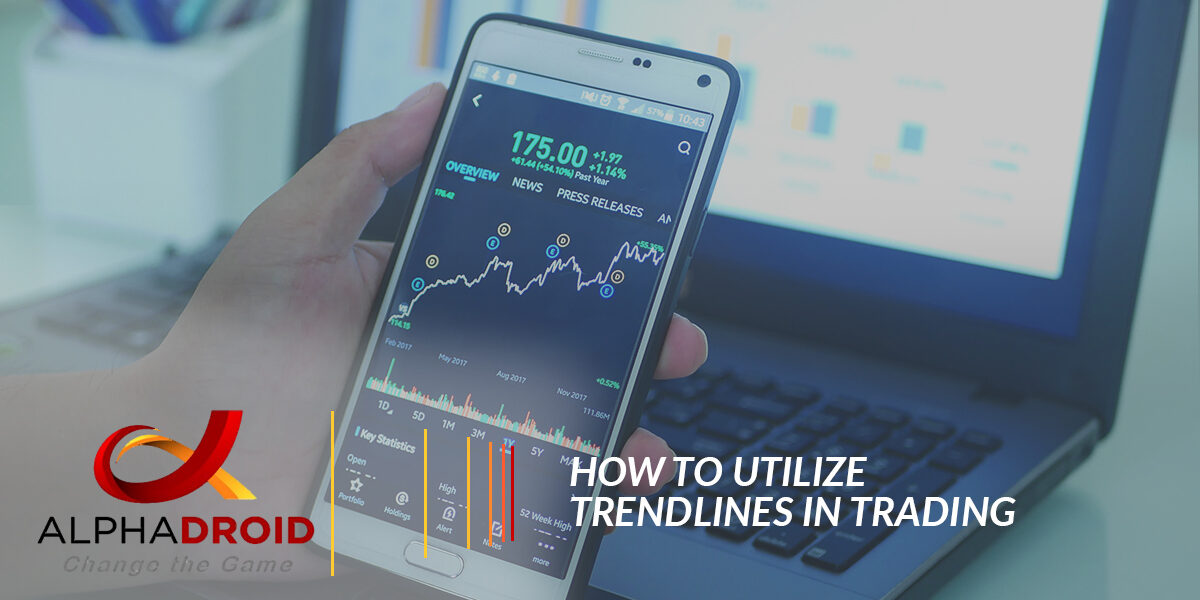How To Utilize Trendlines In Trading

Simply put, a trend line is a straight line drawn on a price chart connecting two or more high or low prices established over a given period of time. Trend lines are among the most commonly used trading tools used by technical traders, as many traders find these lines to be helpful in identifying important price trends and trend reversals. An essential part of delving into technical analysis and trading off of charts, trendlines are a great tool for traders to use, as long as they are used properly, that is. When trendlines are used incorrectly though, they can become ineffective, or worse, counterproductive, resulting in traders believing that prices have made a reversal when they actually haven’t, or that a trend has strength when price action suggests it doesn’t.
To help traders effectively use trendlines as a part of their strategy, we put together some tips that will help utilize this tool as a part of your trading strategy.
The Basics of Trendlines
Trendlines highlight a trend or a range, connecting swing lows, where the low is lower than the surrounding prices, and swing highs in price. As prices rise, as do the swing lows. Connecting these lows with a line results in a rising trendline, indicating that the trend is up. Trendlines can also be drawn along the swing highs, showing both the angle of ascent and the strength of the price move, whether it is strongly higher or not.
Coincidently, as the price falls, the swing highs fall too. When these highs are connected with a like, the result is a trendline that is decreasing, indicating that the trend is down. Additionally, a trendline can be drawn along swing lows, which shows the angle of descent and the strength of the downward price movement.
Using Multiple Trendlines
Generally, traders have more than just one trendline in play. At any moment, multiple trendlines can show the price movement over various periods of time. When trendlines are at very steep angles, it is generally an indication that they have a short life. This is due to the prices not being able to sustain a near vertical rise or fall for long. That said, traders can utilize multiple trendlines to help with spotting the overall trend while simultaneously highlighting small trends and corrections within that overall trend.
When there is an uptrend, purchasing opportunities may occur when a short-term downtrend meets the overall ascending trendline. When a downtrend exists, selling or shorting opportunities may present themselves when a short-term uptrend meets the overall descending trendline.
Adjusting Trendlines
When trendlines are created, it is not unusual for them to need adjusting. Since prices don’t typically move in a consistent fashion, and since trendlines account for both time and price, they move along the price and time axis. Trends that show acceleration or deceleration typically will require an adjustment of the trendline. To determine whether or not a trendline needs adjusting, or whether it has been definitely broken, consider how the price moves within a trend.
During uptrends, the price makes higher highs and higher lows. As long as the price keeps doing this, if it moves below the trendline it does not necessarily mean the trend is finished. If this is the case, the line may just need some adjusting.
Using Trendlines as a Guide
Due to the need of constant adjusting, trendlines should not be utilized as a trade signal. Additionally, traders should consider that a trendline drawn at a slightly different angle can make a big difference on what price that trendline intersects with.
That said, traders that use trendlines as a guide shouldn’t be concerned with trendlines drawn along exact highs or lows. In certain situations, drawing trend lines along extreme highs and lows will work, but when it does not, traders should be drawing trendlines that are of the best fit. Since the trendline isn’t being utilized as a trade signal, the trading tool can still provide traders with relevant information about the trend, without the need of constant adjustment.
Conclusion
Trendlines are a great tool for traders to use. They showcase short-term trends within the overall trend. Keep in mind, traders should attention to price action and always consider it when using trendlines. If the price makes lower lows and lower highs, it’s still a downtrend even if the price moves above a decreasing trendline.
Oppositely, if the price makes higher highs and higher lows, the price still has an uptrend even if it moves below the trendline.
When used correctly, trendlines can alert traders of potential trade opportunities to mitigate risk and increase profit returns.
Utilize Trends With AlphaDroid’s Algorithmic Trading Strategies
Utilizing trendlines properly is not always easy. But with AlphaDroid, a premier investment portfolio management software, finding trend leaders is easier than ever.
Unlike other investment theories, AlphaDroid’s algorithms make decisions based on “what is already happening,” not based on cycles, patterns, correlations, or opinions of “what should happen.” Using complex signal processing algorithms from the cross-disciplinary science of electronic communications theory, AlphaDroid can optimally extract trends from noisy market data. This enables traders to identify asset classes and sectors that are showing strength in any market condition, even if the strongest asset class is cash.
Having a disciplined, rules-based system of buying and selling helps to identify and capture profits, and, more importantly, to avoid losses incurred when holding a declining position over long periods of time. It is only by owning the trend leader and avoiding the laggards that one can simultaneously improve returns and reduce risk. If you are ready to learn how AlphaDroid can help you improve returns and reduce risk, try your free trial today!

